A Millennia of Floral Selection
Due to millennia of human selection, peonies today come in a broad range of colors, forms, and fragrances. Wild peonies also come in a variety of colors, but are generally simpler-looking and are considered to have a “single” floral form.
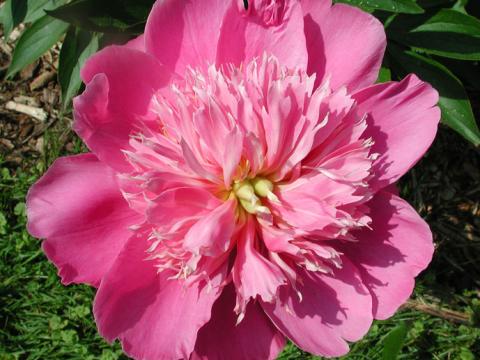
Anemone
The stamens of this flower are transformed into petaloids – small, narrow petals in the center of the flower – surrounded by the outer guard petals. This form is the next step in the transformation of stamens to distinctive petal-like tissue.
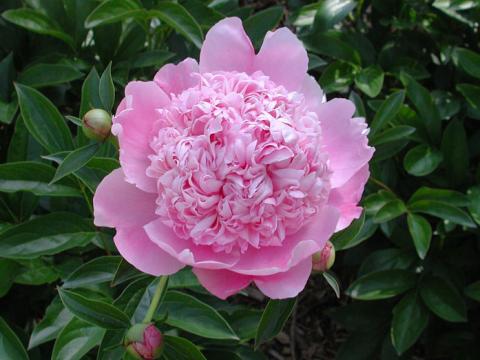
Bomb
The stamens of this flower are completely transformed into inner petals. These inner petals are narrower than the outer guard petals so that the flower looks like a sculpted ball of ice cream on a shallow bowl. A “bombe” is the name of this style of ice cream dessert. The bomb ends this series of stamen transformation.

Double
Five or more outer guard petals with a center of stamens and carpels that have been more or less transformed into petals – creating the full body of the flower. Occasional stamens may be interspersed throughout the flower.
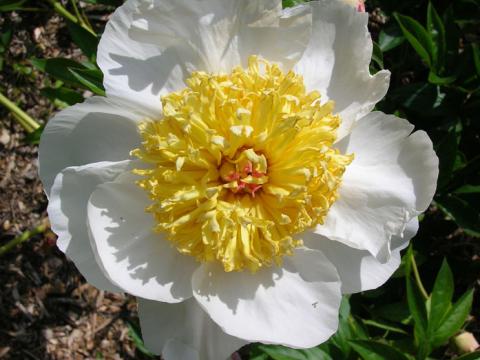
Japanese
Five or more guard petals arranged around the carpels and stamens. Stamens are transformed into stamenoids which are similar to stamens in form and color but have a lumpy texture and thicker tissue that prevents them from shedding pollen. This form is the first in the series where the normally pollen-bearing stamens are transformed into distinctive petal-like tissue.
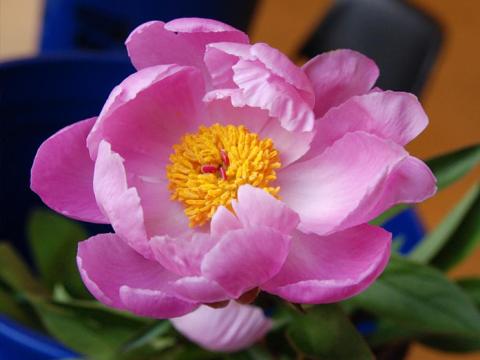
Single
Similar to the wild form of the peony with five or more guard petals arranged around the carpels and pollen-bearing stamens of the flower. This is the fundamental peony flower form.
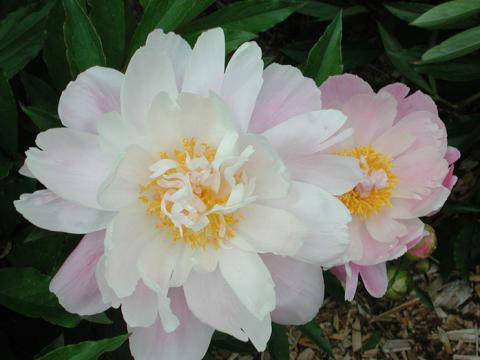
Semi-double
Five or more outer guard petals with a center of smaller inner petals often decreasing in size as they near the center of the flower. Pollen-bearing stamens may be intermixed with petals or be present in the center of the flower. Occasional transfomation of stamens to petal-like structures.
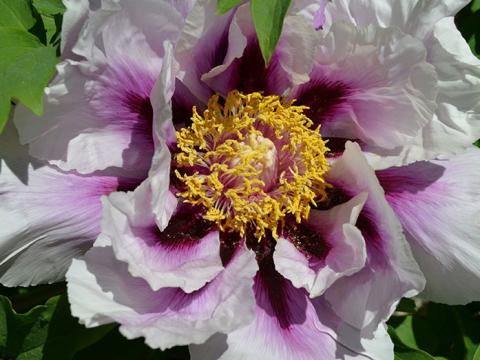
Tree
The tree peony is native to China. As suggested by its name, the tree peony’s stems are woody. Unlike the herbaceous peonies, the tree peony’s woody stems remain in the fall after the leaves have died and fallen off. Tree peonies bloom somewhat before herbaceous peonies, putting on a show two to three weeks prior to the main herbaceous peony beds. Tree peonies come in single and double forms and in colors usually not seen in herbaceous peonies such as purple and yellow.